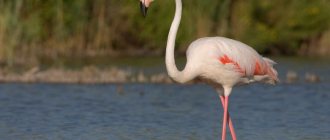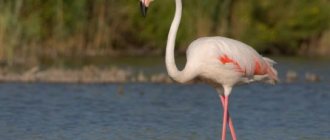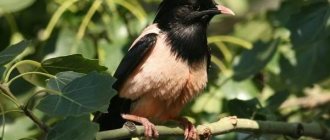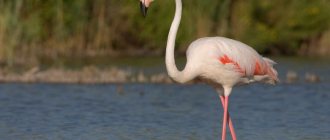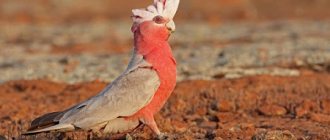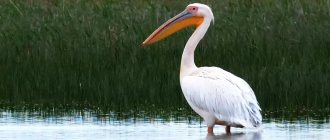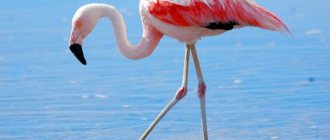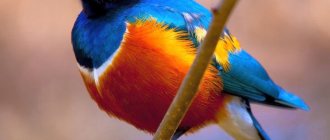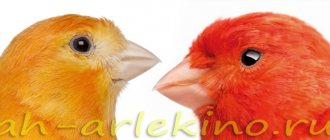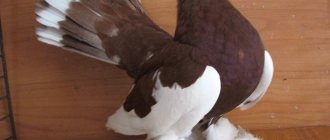27 December71523flamingo bird class
The common flamingo, or as it is also called, the pink flamingo, is a bird from the order Flamingidae. This type of flamingo is the largest and most common. The pink flamingo is truly a bird of paradise, which is naturally unique, graceful and very beautiful. In this article you will find a detailed description and photo of the pink flamingo, and also learn a lot about the common flamingo.
Why are flamingos pink? Why are flamingos pink?
Flamingos are not the only bird with such an extravagant shade of feathers.
The same color adorns the pink gull and pink lentil, pink starling and pink pelican. Some birds are born with a pink tint of feathers, while in others the color appears gradually, with age. But the reasons and mechanisms for color change are different for everyone.
. The color of a flamingo's plumage depends entirely on its diet: the chicks have an unpresentable dirty white hue and only then become soft pink, bright red, sometimes acquiring a rich fuchsia color. Unparalleled beauty appears thanks to carotenoids - natural pigments formed as a result of photosynthesis in fungi, bacteria, higher plants and algae.
It is algae and seafood that are the main components in the flamingo’s diet. It is not for nothing that the habitat of these unique birds is the shores of seas and salt lakes.
Today, there are two popular versions of what is the source of carotenoids for pink flamingos. According to one of them, the plumage of birds turns red due to the consumption of the blue-green algae spirulina. Another hypothesis states that this is due to Artemia - small crustaceans living in salt water.
Enemies
In bird colonies there are several thousand individuals and they all become a tasty morsel for their enemies. The most dangerous animals for flamingos are falcons and kites. They constantly steal animal eggs and chicks. But during nesting, individuals in the colony always defend the clutches of others. However, wolves, foxes and jackals also hunt birds. Predators love flamingo meat, and it is easy to catch them: you just have to ambush an individual standing far from the others in shallow water. There are also frequent cases when these predators settle nearby and then many flamingos die.
The red flamingo is a bird of extraordinary beauty that lives on the Caribbean islands
The red flamingo (Phoenicopterus ruber) is a very beautiful, bright and graceful bird, listed in... She amazes not only with her amazing beauty, but also with her behavior. Unfortunately, this extraordinary subspecies of flamingo is very rare.
The bird differs from the pink flamingo (another subspecies) in its bright red color and smaller size, but the biology of both subspecies is similar.
Recently, the number of red flamingos has decreased by 5 times. Currently, the number of individuals within the entire range is about 22 thousand. Their numbers are sharply declining due to a decrease in suitable nesting sites, as well as disturbance factors.
Appearance of a red flamingo
The body length of an adult is 110 cm. The plumage ranges in color from pink to bright red. They have a graceful head with a powerful beak on a long neck.
Habitats of the subspecies
The red flamingo lives on the Galapagos and Caribbean islands, as well as the northeastern coasts of South America and its southern part.
Nutrition and feeding behavior of red flamingos
The small reddish crustacean Artemia, as well as its eggs, form the basis of the flamingo’s diet. In addition, the diet includes:
- small crustaceans,
- shellfish,
- worms,
- diatoms and blue-green algae.
The flamingo searches for food in shallow water areas, digging with its beak at the bottom of the reservoir, lowering its head under the water, but not deep. The lower jaw is at the top, the upper jaw is at the bottom, and the crown almost touches the bottom.
The parents feed the chicks with light pink regurgitated liquid for two months. It contains semi-digested food and secretions from the proventriculus and glands of the lower esophagus. In terms of nutritional value, the liquid can be compared to the milk that mammals feed their babies.
Flamingos drink brackish and also fresh water that runs down their plumage when it rains.
Reproduction and nesting of the red flamingo
Red flamingos nest in small colonies of 5-50 pairs. To do this, they select salty swamps on the gently sloping shores of lakes, islands and lagoons of the sea coast.
Flamingos are monogamous, forming pairs for several years. At nesting sites they protect their nest directly.
The nest looks like a truncated cone. It is made from gypsum and sea silt. One clutch contains from 1 to 3 large white eggs. The female and male incubate the eggs together for 27-32 days. They also take care of the offspring together (role model).
Hatched chicks are very active from birth. They are sighted and have a straight beak. Their bodies are covered with down.
A few days after hatching, small but independent chicks leave their nest. After a month they change their downy outfit.
After leaving the nest, red flamingo chicks gather in large groups. During this time, so-called “duty teachers” look after them. They monitor the younger generation during moments of temporary absence of parents.
On the 65th day of life, the chicks acquire the ability to fly, and the formation of their filtering apparatus ends. At 4-5 years old, flamingos become sexually mature individuals.
Lifespan
In the wild, the red flamingo lives up to 30 years, and in captivity up to 35-40 years.
Nutrition
The common flamingo feeds on larvae, small insects, blue-green and red algae, mollusks, crustaceans and small fish. Their tendency to eat both vegetation and small animals makes them omnivores.
We suggest you read: Removing mats from a cat at home, why a cat's fur falls off
Interesting fact! Flamingos have pink plumage because the algae they eat contains beta-carotene, an organic substance that contains a reddish-orange pigment. Molluscs and crustaceans contain similar pigment.
If a flamingo bird stops eating food containing carotenoids, its new feathers will begin to grow in a paler shade, and the pink color will eventually disappear. To get food, they have to plunge their feet into the mud and lower their heads under the water, moving from side to side. This process allows them to collect a mixture of water and food. The curved beak helps stir up water.
Pink flamingos can survive under water for several minutes due to the fact that they can hold their breath. Then they quickly stick their heads out and take a deep breath. The process happens so quickly that you may not even notice that the birds have taken oxygen into their lungs.
They receive water during the absorption of food, then, through the filtration process, they displace it from the body. They only need fresh water for drinking. To do this, they fly to another body of water or lick rainfall from their feathers.
What do flamingos eat? Appearance
The flamingo rightfully bears the title of not only the longest-legged, but also the longest-necked bird. The flamingo has a small head, but a huge beak, larger than it and curved downwards, in which (unlike most birds) it is not the mandible that moves, but the suprabeak. The edges of the massive beak are equipped with horny plates and denticles, with the help of which birds filter the liquid to obtain food.
This is interesting! Its neck (in relation to the size of its body) is longer and thinner than that of a swan, which is why the flamingo gets tired of holding it straight and periodically throws it over its back so that the muscles can rest.
There are also horny plates on the upper surface of the thick, fleshy tongue. In flamingos, the upper half of the lower leg is feathered, and the tarsus is almost three times as long as the latter. A developed swimming membrane is noticeable between the front toes, and the rear toe is very small or absent. The plumage is loose and soft. There are unfeathered areas on the head - rings around the eyes, chin and frenulum. The wings are of moderate length, wide, edged with black (not always).
The short tail consists of 12–16 tail feathers, with the middle pair being the longest. Not all flamingo species are shades of red (from soft pink to purple), but sometimes they are off-white or gray.
Lipochromes, coloring pigments that enter the body along with food, are responsible for coloring. The wingspan is 1.5 m. When molting, which lasts a month, the flamingo loses its wing feathers and becomes absolutely vulnerable, losing the ability to take off when in danger.
What determines the color of a flamingo? Basics:
The flamingo is a large bird with beautiful pink or red feathers, also known for its long legs and slightly crooked long beak.
The largest among flamingos, the Pink Flamingo, reaches 1.2-1.5 meters in height and weighs a maximum of 3.5 kilograms. The smallest flamingos are the Lesser Flamingo, which is just over 0.8 meters long and weighs an average of 2.5 kilograms.
Pink flamingos have the palest feather colors, while Caribbean flamingos are famous for their bright pink, almost red feathers.
Flamingos come from an ancient lineage of birds, with ancestors similar to modern species living on the planet as early as 30 million years ago, according to the Smithsonian's National Zoo.
The distinctive pink color of flamingos depends on the food they eat. They feed on algae and shrimp, which contain carotenoid pigments (these pigments are what give oranges their orange color), which turn into red pigments when digested.
When eating, flamingos lower their heads under the water, draw in water with their beaks, sifting out the nutritious foods they eat, and the water comes out through their beaks. Tiny, hair-like filters help filter out food and release water. One study found that a special float that supports the bird's head allows it to feed by turning its head upside down and holding it on the surface of the water.
The long legs of flamingos help them walk along the bottom even at relatively great depths in search of food, which gives them some advantages over other birds.
Flamingos are social birds that live in groups of different sizes. They gather in flocks when they fly from place to place, and also prefer to stay in a group when they are on the ground. Flamingos also have loud and shrill calls.
These birds can fly, but they need a short run to get off the ground. During flight, they extend their long necks and legs in one straight line.
Flamingos pair up during the mating season, but find other partners the following season. The female and male build a nest together. The female lays only one egg per season, which is guarded by both parents. After the chick hatches, both parents are also responsible for feeding it.
The nest is usually built from mud and is about 0.3 meters high. The height allows you to protect it from floods and the very heated surface of the earth. After hatching, the chick has gray feathers and a pink beak and legs. They do not acquire the characteristic pink color of their feathers until they are 2 years old.
After hatching, flamingo chicks remain in the nest for 5-12 days, fed a fatty substance with nutrients produced in the upper parts of the digestive tract of the parents. When the chick grows up, it begins to feed on its own along with the main group of birds in the so-called “nursery”.
Flamingos have only a few natural enemies. In the wild they live to be 20-30 years old, in captivity they live for more than 30 years.
Flamingo feet. Description and features of flamingos
Flamingo bird, a resident of the African and southern parts of the Asian continent, some territorial parts of southern Europe. And even in St. Petersburg and Dagestan they were noticed.
The pink flamingo is one of the largest representatives of its genus. The rest of them are: Common and Red Flamingo. Andean and Chilean flamingos. Lesser and James's flamingo.
The smallest of the flamingo species is the Lesser. It does not grow even a meter tall, and an adult bird weighs only two kilograms. Pink adult flamingos weigh four to five kilograms.
And flamingos are one and a half meters tall. In fact, they have the longest necks and legs when compared to the crane and heron families. Well, as always happens in nature, males, of course, are larger and more beautiful than females.
The color of flamingos comes in a variety of shades, from dirty white and gray to deep coral and purple. And their color directly depends on what they eat. After all, some algae eaten as food color their feathers a delicate pink hue.
And the more flamingos eat those same algae, the brighter the color it will be. And the tips of the wings are black. But this can only be seen when the bird is in flight. After all, there is no more beautiful sight than a flock of flying Pink flamingos.
The flamingo's head is small, but it has a huge beak. The edges of which are equipped with very small denticulate partitions. The upper part of the beak is curved, similar to a knee, pointed towards the bottom.
And it is the only movable part, unlike the lower one. The base of the beak and up to its half are light, the end is dark, almost black. The neck is longer and thinner than a swan's, so the bird quickly gets tired of holding it straight and often throws it over its back to relax its muscles. On the chin and in the eye area, flamingos have no feathers at all. The plumage of the entire bird is loose. And their tails are very short.
The wingspan of an adult flamingo is one and a half meters. It’s interesting that when a bird matures, it completely loses the feathers on its wings, all at once. And for a whole month, until she fledges again, she becomes vulnerable, defenseless against predators. Since he completely loses the ability to fly.
The legs of pink flamingos are thin and long. In case of escape, in order to take off, they need to run another five meters along the shallow shore. Then, taking off, flap your wings very often.
And once in the air, they keep their neck straight, straight forward. The legs also do not bend throughout the entire journey. Like a flock of pink crosses flying across the sky.
Also, you can see in the photo of flamingos, they always stand on one leg. And this is not just like that. They have to stay in water for a long time, which is not always warm. Therefore, in order not to overcool its body, the flamingo now and then changes one or the other leg.
The front toes are elongated and webbed like those of waterfowl. And the back toe, like a small appendage, is located on the leg, higher than the front toes. Or some don’t have it at all.
Lifestyle
Flock of flamingos
Flamingos lead a sedentary lifestyle. Only the Pink Flamingo, living in a temperate climate zone, makes seasonal migrations. Some colonies have to move due to climate change, drying up water bodies and a sharp reduction in food. During the migration period, the flock flies up to 1.5 thousand kilometers. In flight, birds reach speeds of up to 60 kilometers per hour.
A flock of flamingo birds look at the sky
Flamingos are socially developed birds. They live in large families, accumulating in flocks of thousands (the number reaches tens of thousands of birds). The family is divided into clans, which differ in the timing of egg laying. Ornithologists have noted that the desire to reproduce in birds appears only in conditions of mass population. Flamingos that live alone rarely breed offspring.
Flock of flamingos in the swamp
Flamingo is a wetland dweller. Birds lazily wander through the water during the daytime and look for food. Flamingos rarely and reluctantly fly. The bird has short wings and has to run to fly. In flight, flamingos often flap their wings. The streamlined shape of the body, which is achieved by straightening the legs and neck, allows one to stay in the air for a long time and make long flights.
What do flamingos eat?
The most common species is the common flamingo, or, as it is also called, the pink one. The bird belongs to the order Flamingidae. The description of flamingos should begin with the fact that this species is the largest. The bird resembles a creature from the Garden of Eden. Despite the fact that she can most often be seen walking along the shore of a reservoir, she is an excellent swimmer. The unusual color of flamingos is impossible not to notice. In adult males and females, the main plumage is pale pink, the wings are purplish-red, and the flight feathers are black. The skin on long and thin legs also has a pink undertone. The bird has a large beak, as if broken in the middle, with a black tip.
When describing flamingos, one cannot fail to mention that they are somewhat similar to storks, cranes, and herons. But they have no relationship with these birds. The closest relatives of flamingos are common geese. Previously, they were even part of the order Anseriformes. On average, a flamingo weighs several kilograms and has webbing between its front toes.
The appearance of the pink flamingo can be safely called exotic, due to the unique shade of its plumage. The birds hold their necks gracefully and gracefully, looking like a question mark. Very often you can see how these representatives of birds stand on one leg. In order not to freeze, they alternately tuck and hide one leg in their plumage. This situation seems difficult and inconvenient to people, but for them it is very simple.
The pink flamingo has small red rings and a frenulum “painted” around its eyes. The body is round, the tail is short. The bird is quite large, the body length is 120-130 cm. Adults can reach a weight of 4 kg. Each paw has four toes and three connecting membranes.
Why are flamingos so beautiful, what determines the pink color of their plumage? These birds have this coloring due to lipochromes (fatty pigments or carotenes) that they receive from food. Flamingos eat red crustaceans, which are high in carotene. Food is obtained by filtering water and mud using its beak. In zoos, these birds are just as beautiful because carotene-rich foods are specially added to their food: carrots, bell peppers, and shellfish.
Where do flamingos live and how?
The pink flamingo is the most common type of flamingo. Flamingos live in Africa, southern Europe and southwest Asia. In Europe, flamingo colonies live in the south of France, Spain and Sardinia. In Africa, flamingos live in the south of the continent, as well as in Tunisia, Morocco, Mauritania, Kenya and the Cape Verde Islands. Flamingos live in the lakes of Southern Afghanistan, North-West India and Sri Lanka. The pink flamingo also lives in several lakes in Kazakhstan.
The pink flamingo does not nest in Russia, but regularly migrates across its territory - at the mouth of the Volga River, in the Krasnodar and Stavropol territories. It flies to the south of Siberia, as well as to Yakutia, Primorye, and the Urals. Pink flamingos flying through Russia winter in Azerbaijan, Turkmenistan and Iran.
Flamingos live their entire lives in groups of different sizes, because they are social birds. Flying from place to place, they gather in flocks, and while on the ground they stay in groups. The pink flamingo lives in large lakes with salt water, in sea lagoons and estuaries, in shallow waters in inaccessible places and with muddy bottoms. Flamingos live along the banks of water bodies in large colonies that can number hundreds of thousands of individuals.
Mostly flamingos live sedentary lives. These birds can wander within their habitat in order to find a place with more favorable living conditions or if there is a lack of food in the previous place. Only northern populations of pink flamingos migrate for nesting.
Flamingos live in different conditions and are able to tolerate sudden temperature fluctuations. Pink flamingos have good endurance and can cope even with extreme weather conditions, which not every animal can survive. They are found near very salty or alkaline lakes. This is due to large populations of crustaceans in salty waters, where fish do not live due to increased salinity. The pink flamingo also lives on high mountain lakes.
The common flamingo can survive in aggressive conditions of an alkaline and salty environment thanks to the dense skin on its legs. Also, to quench their thirst and wash away the salt, the birds periodically visit nearby sources of fresh water.
Poaching and intensive economic activity have led to a worldwide decline in their population. So far, this species has the status of “least concern” in the International Red Book.
Conservation status
The population size is quite unstable. The species is listed in the Red Book of the world, but over the past 10 years the number has not decreased significantly. Although some populations are losing their habitats due to human activity.
Another factor reducing the number is hunting for animal eggs. You can see them in many restaurants. Thus, the masonry is constantly emptied. Water and soil pollution also plays a huge role, causing individuals to get sick and die. An equally important cause of death is anxiety caused by the desire to stroke or touch the animal.
beautiful flamingos
